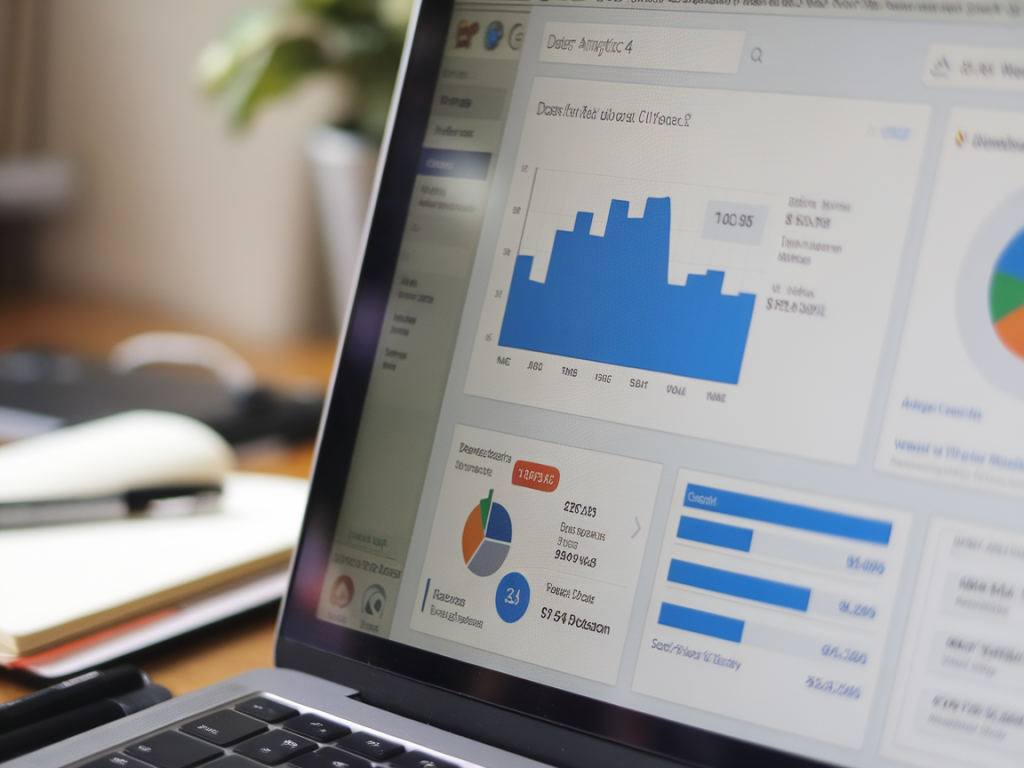If you've made the switch to Google Analytics 4 (GA4) like I have, you’ve probably realized that this new version isn’t just an update—it’s an overhaul. As someone who lives and breathes digital strategies, I’ve spent hours navigating GA4 to understand what it truly reveals about my users, where they come from, how they behave, and more importantly—how to turn all this information into meaningful, revenue-driving decisions.
Why GA4 Feels Different (and That’s a Good Thing)
The first time I opened GA4, I felt a mix of excitement... and a headache. Gone were the familiar dashboards of Universal Analytics. In their place? Events, parameters, engagement metrics, and a customizable interface. But here's the truth: this reimagining reflects the way people actually move online today. Sessions are less linear, devices are interchangeable, and privacy standards are ever-tighter. GA4 is responding to that reality.
With its event-based model, GA4 doesn’t just tell you what’s happening—it tells you *how* and *why* it’s happening. That means deeper customer insights if you know where to look. Personally, it’s allowed me to refine content strategies, boost conversion rates, and even identify overlooked user paths that are now real engagement opportunities.
User Insights: Who Are Your Visitors, Really?
In the world of inbound marketing, understanding your audience is everything. GA4 enables this through:
- Demographics > Overview: GA4 gives aggregated data on age, gender, interests, and location. I recently discovered a spike in traffic from Ireland on one of my SEO guides—information that helped me localize future blog content.
- Tech: This section tells me what devices, operating systems, and browsers my audience is using. When I noticed a growing number of mobile Safari users, I optimized my lead form UX accordingly—and saw a 12% increase in submissions.
Pro tip: The real power here lies in segmentation. Isolate different audiences (for example, returning users from paid traffic) to see how their behavior shifts over time. It’s granular, yes—but that level of insight is SEO gold.
How People Discover and Engage With Your Content
GA4’s new acquisition reports are where I spend most of my “discovery” time. Under "User Acquisition" and "Traffic Acquisition", I can see exactly how people found me: whether it was through organic search, email campaigns, social posts, or referrals from sites like Product Hunt or Medium.
One of my favorite tricks? Filter this data by "engaged sessions" (another lovely GA4 metric). Instead of just knowing someone arrived, I can now ask: who stuck around? Who interacted? Conversion is important, but *engagement before conversion* is where the battle is often won.
Session Flow Is Dead—Say Hello to Path Exploration
You’ll notice GA4 has ditched the old session flow reports. Instead, we now have “Explorations”—a brilliantly flexible analysis tool. With Path Exploration, you can map out the exact navigational flows users take.
Here are a few things I’ve used Path Exploration for:
- To identify popular second-page visits after someone reads my blog posts.
- To uncover drop-off points in my e-book funnel.
- To test different navigation setups and see how they influence user progression through key pages.
The amount of times I assumed users followed a certain website journey—only to be proven completely wrong—is laughable. Trust your data, not your instincts!
Events, Events, and More Events—What To Track
GA4 revolves around events. Each time someone interacts with your site—scrolls, clicks, downloads a file—it’s an event. Out of the box, GA4 will track some basic actions, but you’ll want to customize this to track what matters to your business specifically.
I recommend setting up events for things like:
- CTA button clicks (especially pricing/download/demo links)
- Video watches—great for SaaS or service brands using video for education
- Newsletter signups or lead magnet downloads
- Outbound link clicks, especially if you work with affiliates or guest content
You can do all of this through Google Tag Manager (which, if you ask me, is a right of passage into the world of pro-level analytics).
Turning Data into Action—My Go-To Reporting Strategy
GA4 is at its best when it drives business decisions. Here's how I personally use GA4 data each week to improve performance across inbound, SEO, and content strategy:
| GA4 Insight | Action Taken |
|---|---|
| Top blog page has low engagement (< 30s) | Split-tested new intro + added internal links to keep users on site longer |
| High scroll depth but low conversions on lead magnet page | Tested new CTA placement & added real social proof underneath |
| Returning users via email campaigns perform better than new organic users | Increased frequency of newsletter & added blog digests with CTAs |
| Mobile sessions bounce more often than desktop | Refined tablet/mobile view UX and sped up load times |
These insights don’t just come by glancing at reports. They come by asking why the numbers look the way they do—and taking the time to refine based on real user behavior rather than assumptions.
GA4 Audiences + Google Ads = Retargeting Magic
If you’re running paid campaigns, one of the most slept-on features of GA4 is custom audience building. You can set audiences like:
- Visitors who reached checkout but didn’t buy
- Readers of a specific blog who didn’t download your e-book
- Organic visitors who engaged for >60 seconds
I’ve used these to create highly specific and cost-efficient retargeting lists in Google Ads, often bringing back people who needed just one more nudge to convert. Think of GA4 as a master targeting engine, not just an analyzer.
GA4 takes effort—but once you move past the overwhelm, it becomes addictive. I consider it a core pillar of any successful inbound marketing strategy. If you need help setting up the right tracking or just want to know what metrics really matter for your goals, I'm here to help.
